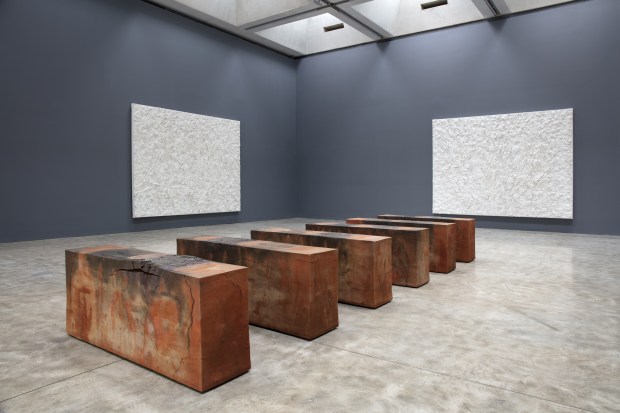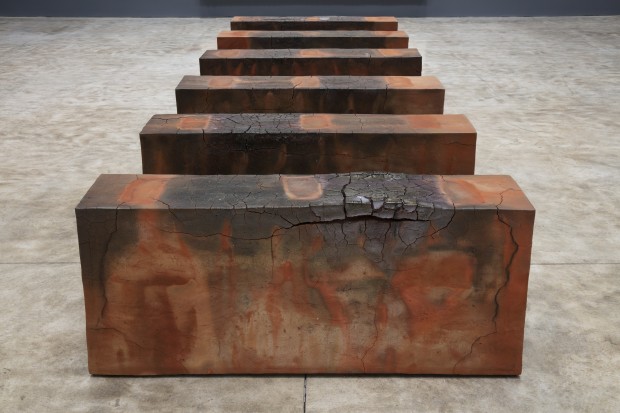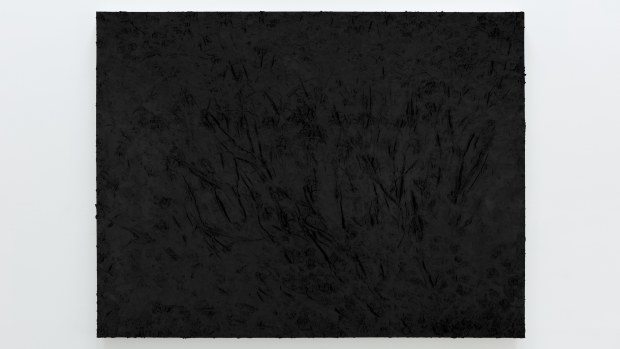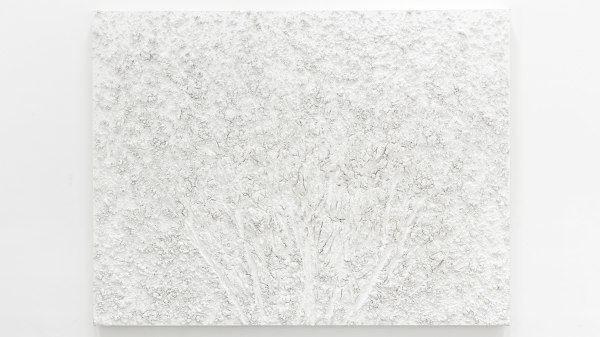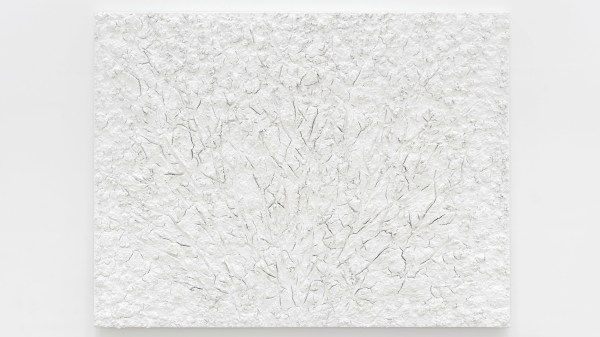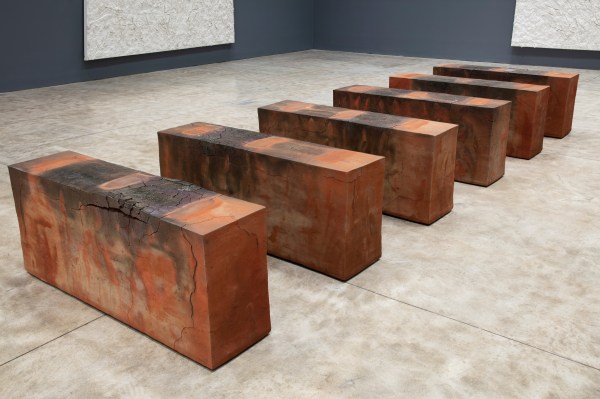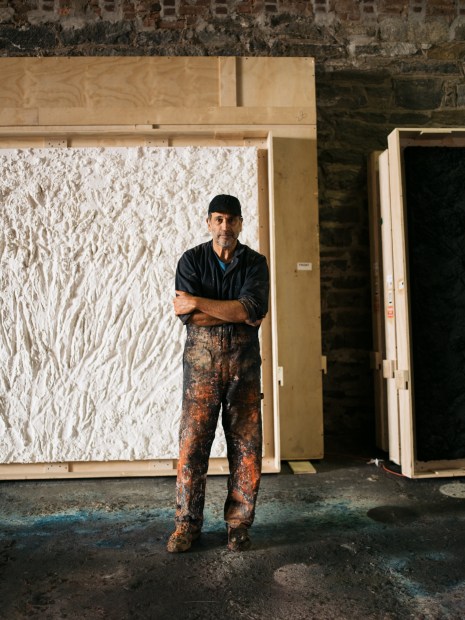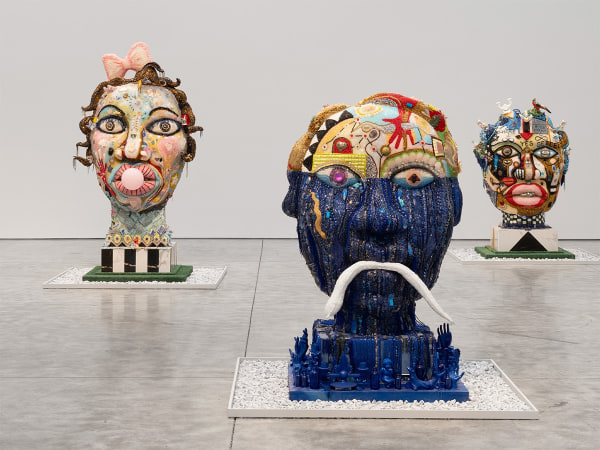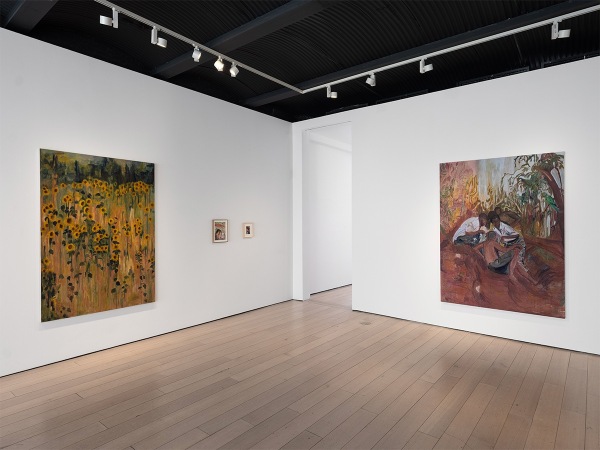Bosco Sodi: Vers l'Espagne
Past exhibition
-
-
Kasmin is pleased to present an exhibition of new work by Bosco Sodi (b.1970, Mexico) on view from October 8–November 12, 2020 at 509 West 27th Street. Vers l’Espagne is Sodi’s second solo exhibition at the gallery. Its title translates as “To Spain” in homage to the lineage of artists who influenced his early development as a painter. Drawing upon the evolution of art history from prehistoric cave painting through to modern Spanish artists Eduardo Chillida, Manolo Millares, Joan Miró, Antoni Tàpies, and Informalismo Catalan, Vers l’Espagne is a love letter to gesture, nature, and the artistic instinct.
-
The exhibition brings together five large-scale paintings with freestanding clay sculptures in the gallery’s flagship exhibition space. Entirely white, the restricted palette of the paintings develops the powerful simplicity of the raw, elemental materials—clay, sawdust, and pigment—that create the dense surfaces of the artist’s richly textured, monochromatic paintings. Sodi mixes the materials and throws them down onto a flat canvas in a gesturally energetic process that draws upon both creative intuition and chance. As the layers of material dry, structures form without the guidance or intervention of the artist, creating splintered ravines that recall primordial topographies and the fissured landscapes of his native Mexico.
-

-
In this series, Sodi calls particularly upon the work of Joan Miró and his three paintings titled Peinture sur fond blanc pour la cellule d'un solitaire (painting on a white background for the cell of a recluse) which are housed at the Joan Miró Foundation, Barcelona, where Sodi lived and worked for a decade. The atmospheric qualities of the color create, according to Sodi, “a feeling of warmth, calmness, and repose.” On Miró’s works, Sodi has said, “The paintings are just a thin black line made in a single gesture on a huge white canvas. I always admired them: wondering how Miró, with one stroke, was capable of doing something so powerful and beautiful.”
-
 Bosco Sodi in the Miro chapel, Barcelona, Spain.
Bosco Sodi in the Miro chapel, Barcelona, Spain. -
“The first phase of the Vers l’Espagne project consisted of Bosco Sodi’s trip to Barcelona to see the Miró chapel again for himself. He had the authorization of those responsible at the foundation to remain alone in the room for two hours; some photographs show him in the room, going up to the paintings, becoming imbued with and pervaded by the spirit of their author, meditating on Mironian freedom.”
—Juan Manuel Bonet -
-
 Bosco Sodi in his studio in the process of making Vers l'Espagne.
Bosco Sodi in his studio in the process of making Vers l'Espagne. -

-
The exhibition coincides with the publication of a new career-spanning monograph published by Rizzoli in July 2020, as well as several off-site and institutional projects including an exhibition at featuring new black pigment paintings at CAC Málaga and a monumental sculpture Marble Muro at Casa Wabi, the artist’s foundation in Puerto Escondido, Oaxaca.
-
Works
-
About the Artist
 Portrait by Spencer Wells.
Portrait by Spencer Wells. -
Explore
-

vanessa german: GUMBALL—there is absolutely no space between body and soul
April 3 – May 10, 2025 509 West 27th Street, New York, 514 West 28th Street, New YorkKasmin presents its second solo exhibition of new work by artist vanessa german (b. 1976), which debuts related bodies of sculpture across two of the gallery’s spaces in New York. GUMBALL—there is absolutely no space between body and soul deepens german’s singular approach to sculpture as a spiritual practice with the power to transform lived experience. Both series comprise mineral crystals, beads, porcelain, wood, paint and the energy that these objects bring to life to form monumental heads and figures in the act of falling. Together, each body of work envisions the transformation of consciousness necessary to imagine a new world. -

Helena Foster: Time Honoured
April 3 – May 3, 2025 297 Tenth Avenue, New YorkThe first New York solo exhibition of London-based painter Helena Foster features new oil paintings on linen, paper, and vellum that express the artist’s lyrical approach to painting as an accumulation of cultural and generational wisdom. Foster draws freely from literature, theater, film, Igbo oral tradition, and religion, achieving a dreamlike aura of mystery in dynamic compositions ambiguously set between thick vegetation and the built environment.
-



